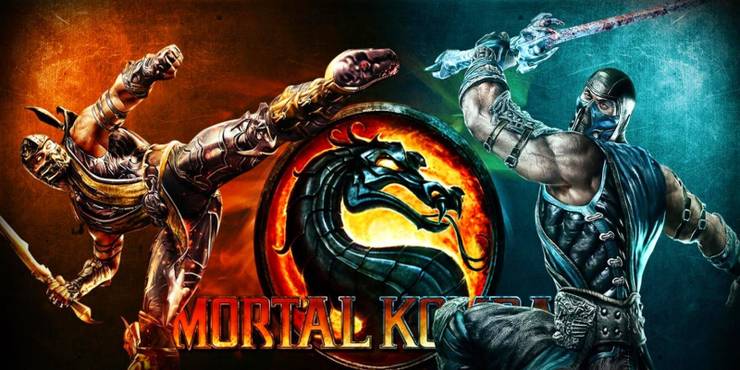The world of Mortal Kombat is full of demons, cyborgs, and ninja, but there are very few dragons in the mix. They aren’t completely absent, but they are elusive, often appearing in obscure corners of the games and other portions of MK lore. This makes it strange that Mortal Kombat‘s main logo – the symbol that has gone unchanged throughout the franchise’s history – depicts one of these majestic creatures. Is it simply a product of a ’90s development studio wanting to look rad in the arcade? Even if that is the truth, NetherRealm has built a few explanations for the MK dragon logo into Mortal Kombat‘s lore.
Some may assume the dragon logo is related to Onaga, one of the strongest beings in Mortal Kombat history and the long-deceased ruler of Outworld. Introduced in Mortal Kombat: Deadly Alliance simply as the Dragon King, he would get a proper introduction as the final boss of Mortal Kombat: Deception and become fully playable in Mortal Kombat: Armageddon. Despite being a vital enemy in the story of the original Mortal Kombat games, Onaga’s physical appearance is very different from the logo, which was also in use before the character’s conception. While it does depict a very powerful being in Mortal Kombat‘s lore, it’s not Deception‘s big bad.
One dragon that does resemble the logo is the one Liu Kang can transform into with his Animality. Many of the martial artist’s powers are seemingly drawn from dragons, including his abilities to throw fireballs and dash through the air. His transformation depicted a more generic dragon in early games, but the fatality in 2011’s Mortal Kombat matches up almost completely with the series logo. This isn’t just a coincidence, as Liu Kang’s form may be drawing from the very beings that sent him to defend Earthrealm in the first game.
What Is The Meaning Behind Mortal Kombat’s Dragon Logo?

According to the lore of the series, the dragon depicted in Mortal Kombat‘s logo is said to be one of the Elder Gods in its truest and most powerful form. Besides the logo, this form can be seen in Shazam’s ending in Mortal Kombat vs. DC Universe, the ending of 2011’s Mortal Kombat campaign, and Onaga’s unused ending in Mortal Kombat: Deception. Because the Elder Gods are content to influence the events of the world rather than directly interfere with the struggle between the realms, no one is aware of the true extent of their abilities or where they would rank among other kombatants.
So, while Mortal Kombat‘s dragon logo may just seem like a random symbol to make the game stand out from The King of Fighters and Street Fighter cabinets, it actually has a deep meaning in the lore of the games. It can be said, then, that every battle in all of Mortal Kombat history is watched over by one of the Elder Gods, via its iconic logo.
About The Author



